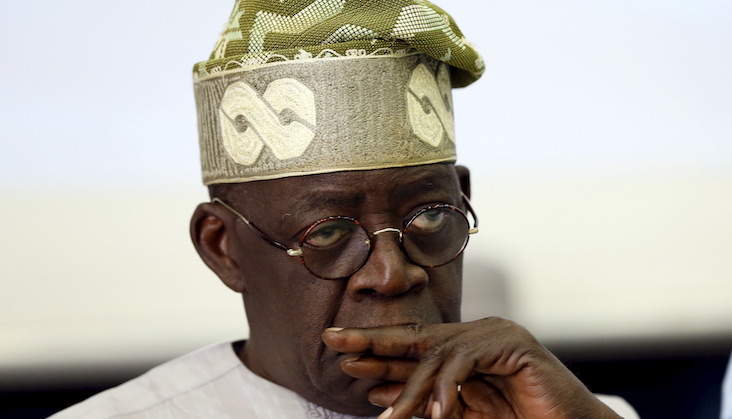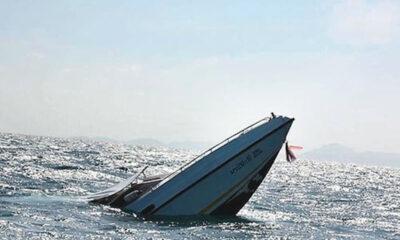Headline
Presidency Slams Financial Times Editor Over Article On Nigeria
Published
3 years agoon
By
Editor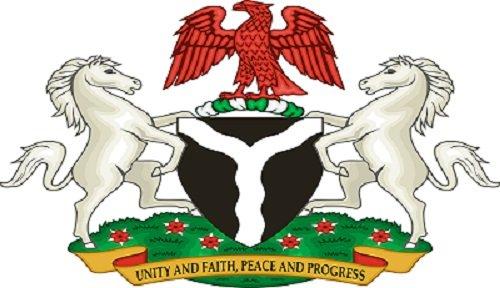
The Presidency has rebuked the Financial Times’ Africa Editor, David Pilling, over an article on the Buhari regime published on January 31, 2021.
In an open letter to The Editor, Financial Times, Senior Special Assistant to the President on Media and Publicity, Garba Shehu, said, “The caricature of a government sleepwalking into disaster (What is Nigeria’s government for? January 31, 2022) is predictable from a correspondent who jets briefly in and out of Nigeria on the same British Airways flight he so criticises.
“He highlights rising banditry in my country as proof of such slumber.
“What he leaves out are the security gains made over two Presidential terms.”
According to Shehu, the terror organisation Boko Haram used to administer an area the size of Belgium at inauguration; now, they control no territory.
READ ALSO: US Court Postpones Sentencing Of Hushpuppi, Mum On Kyari
He continues “The first comprehensive plan to deal with decades-old clashes between nomadic herders and sedentary farmers–experienced across the width of the Sahel–has been introduced: pilot ranches are reducing the competition for water and land that drove past tensions.
“Banditry grew out of such clashes. Criminal gangs took advantage of the instability, flush with guns that flooded the region following the Western-triggered implosion of Libya.
“The situation is grave. Yet as with other challenges, it is one that the government will face down.”
In his article titled ‘What is Nigeria For?’ Pilling had written:
“On the British Airways flight between London and Nigeria’s administrative capital of Abuja, one of the airline’s most profitable routes, nearly all the space is taken up with flatbeds. The unfortunate few making their way to a crunched economy section at the back must trudge through row after row of business class.
“Evidently, there is plenty of money to be made in Abuja’s corridors of power. Nigeria’s economy may be flat on its back, but the political elite flying to and from London will spend the flight flat on theirs, too.
“Next year, many of the members of government will change, though not necessarily the bureaucracy behind it. Campaigning has already begun for presidential elections that in February 2023 will draw the curtain on eight years of the administration of Muhammadu Buhari, on whose somnolent watch Nigeria has sleepwalked closer to disaster.
“Buhari has overseen two terms of economic slump, rising debt and a calamitous increase in kidnapping and banditry—the one thing you might have thought a former general could control. Familiar candidates to replace him, mostly recycled old men, are already counting their money ahead of a costly electoral marathon. It takes an estimated $2bn to get a president elected. Those who pay will expect to be paid back.
“There are some promising candidates. If Yemi Osinbajo, the technocratic vice-president, were miraculously to make it through the campaign thicket and emerge as president, the hearts of Nigerian optimists would beat a little faster.
“But that may be to underestimate the depth of Nigeria’s quagmire. The problem is not so much who leads the government as the nature of government itself.
“Nigeria’s administration is fuelled by oil — though not its economy; more than 90 per cent of output is generated from non-oil activities. But for decades, the business of government — whether military or, since 1999, democratic — has been to control access to oil revenues and earn patronage by spreading petrol-dollars to federal and state supplicants.
“Outside oil, government raises a petty amount of revenue, proportionally much less than other African states. Since the provision of services is so dire, no one who can afford to pay taxes is willing to do so. Nigerians with money opt out of the system. They send their kids to private school, attend private hospitals, employ their own private security and generate their own power. The state borrows ever more heavily to fund what little capital expenditure there is and service mounting debts. Like a giant leech at the top of the body politic, government is essentially there to fund itself.
“This thwarts the aspirations of millions of highly capable Nigerians. Officials extract “rent” by controlling access to business opportunities. The objective thus becomes to slow down investment not speed it up.
READ ALSO: Biafra: Asari Dokubo Warned To Stop Attacks On Nnamdi Kanu
“Almost all the energy, drive and wealth creation in Nigeria happens outside government. New unregulated businesses in the booming tech sector, fashion, design and the creative arts are flourishing. Every day, tens of millions of Nigerians somehow get by, despite the efforts of those supposedly looking out for them.
“As is said of India, Nigeria grows at night while the government sleeps — hardly surprising that some libertarian tech entrepreneurs want the government to withdraw and leave the private sector in charge.
“In reality, the government is not too big. It is too small. The federal budget — not counting money transferred to states — is about $30bn, derisory for a population of more than 200m people. Only trust in government — and a willingness to pay taxes — can redress this balance.
“Nigeria desperately needs an administration whose energies go not into preserving its own privilege but into providing public goods — basic education and health, rule of law, security, power, roads and digital infrastructure. It must remove distortions and subsidies that direct entrepreneurial activity from production to arbitrage.
“The chances of a corrupt system reforming itself are slim. But if Nigeria’s ruling class cannot manage it, any remaining faith Nigerians have in their system of government will evaporate. That way lies disaster.”
(PUNCH)
You may like
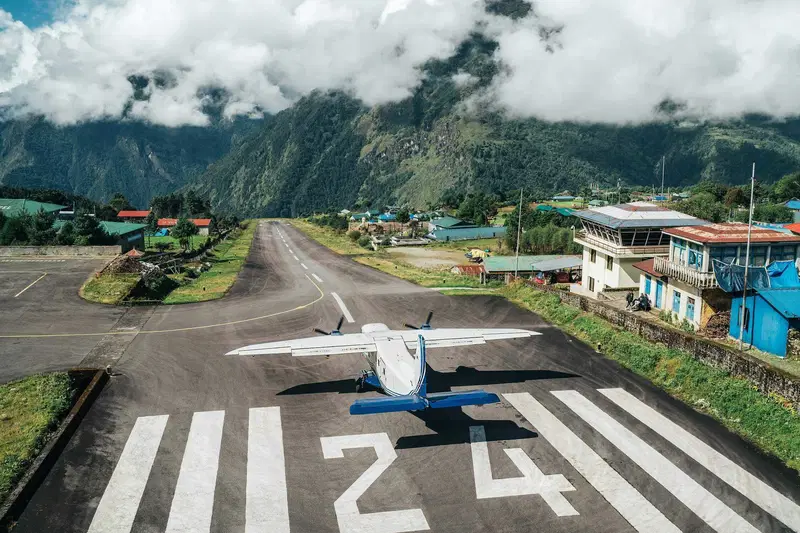
In a world filled with sprawling mega-terminals and transcontinental flights, there are still places where flying is raw, rugged, and incredibly personal.
Each one is a story of bold landings, short runways, and human ingenuity. although there’s no official metric defining “smallest” (e.g., by size, traffic, or infrastructure).
These are the world’s smallest airports, tiny airstrips tucked into remote islands, mountainsides, and icy frontiers.
1. Juancho E. Yrausquin Airport – Saba, Caribbean Netherlands
On the volcanic island of Saba, this airport looks more like a cliffside parking lot than a place for planes. Its runway is only 400 meters long, the shortest in the world that handles commercial flights.
At each end is a drop straight into the Caribbean Sea. There is no room for error here, which is why only small STOL aircraft and specially trained pilots are allowed to land. Despite its challenges, this little airport is a lifeline for the island’s residents and the adventurous tourists who dare to visit.
2. Tenzing-Hillary Airport – Lukla, Nepal
High in the Himalayas near Mount Everest, Tenzing-Hillary Airport is not just small, it’s extreme. At nearly 9,400 feet above sea level, its 527-meter runway slopes sharply downward toward a cliff, helping planes gain speed on takeoff but giving pilots little room to brake when landing.
Strong winds, fog, and unpredictable weather make it one of the most dangerous airports in the world. Yet it’s the main gateway for trekkers and climbers heading toward the Everest Base Camp, and most consider it an unforgettable part of the journey.
READ ALSO: Syncope Or Fainting: What You Need To Know
3. Barra Airport – Outer Hebrides, Scotland
Wike’s remarks in church disrespect to sacred space — Ejiofor
Barra is a place where the ocean tide decides when planes can land. This airport, located on a beach in the Outer Hebrides, is the only one in the world where scheduled commercial flights use sand as their runway.
Aircraft land and take off during low tide, using the wide, flat shoreline as a landing strip. When the tide comes in, the runway disappears beneath the waves. It is an extraordinary experience for passengers and a perfect example of how humans adapt to nature in creative ways.
4. Courchevel Altiport – French Alps, France
This airport serves one of the most exclusive ski resorts in the world, but it is also one of the trickiest to land in. Courchevel’s runway is only 537 meters long and built into a steep Alpine slope.
There is no chance to circle back if something goes wrong, so the approach must be perfect. Surrounded by snow-covered peaks and perched at over 6,500 feet, the airport is used mostly by helicopters and small private planes. Landing here feels less like aviation and more like mountain sport.
5. Agatti Aerodrome – Lakshadweep, India
Agatti is a thin strip of coral in the Indian Ocean, and its airport is just as narrow. The 1,200-meter runway stretches across a sliver of land, with water visible on both sides during takeoff and landing. It looks like the plane is about to land in the sea until the wheels touch down.
READ ALSO: Online Reports On Protest False, Intent To Tarnish Our Image – AAU Ekpoma
With no space for expansion or emergency runoffs, pilots have to land with absolute precision. Despite its size, Agatti is the only air connection for the Lakshadweep islands, making it a vital piece of infrastructure.
6. Luang Namtha Airport – Laos
Tucked into the forested hills of northern Laos, Luang Namtha Airport is a quiet, no-frills place that serves a largely rural area. The airport is small, with limited flights and a modest terminal building.
On most days, the sound of crickets and birds fills the air while the occasional propeller plane comes and goes. It might not look like much, but to locals and travelers looking for access to northern Laos, it is a key part of the journey.
7. Helgoland Airport – North Sea, Germany
The island of Helgoland is a tiny speck in the North Sea, and its airport is equally compact. With a runway just 480 meters long, strong sea winds, and limited space, pilots need special training to land here.
Most aircraft that come in are small and lightweight, ferrying tourists and supplies from the mainland. Though the flight only takes about 20 minutes, the approach feels dramatic, with the island rising from the sea like a rock. For residents and visitors, this airport is a fragile but essential bridge to the rest of Germany.
8. Yrausquin Airport – Aruba (Historic)
Before Aruba became a bustling tourist destination with a large international airport, it relied on small domestic airfields. One of the early ones bore the Yrausquin name, like the better-known airport in Saba.
READ ALSO: Man Seeks End Of 16 Years Wedlock For Lack Of Love
These runways were short, bare-bones, and often located in isolated parts of the island. Though most of them no longer exist, they played a critical role in connecting the Caribbean’s scattered islands before modern aviation infrastructure took hold.
9. Tiksi Airport – Siberia, Russia
Tiksi is about as remote as it gets. Located deep in the Arctic Circle, this small airport connects the town of Tiksi with the rest of Russia. Conditions here are harsh. Temperatures can plunge well below freezing, and snow and ice often cover the runway. Flights are rare, and delays are common due to unpredictable weather.
Still, the airport is vital for delivering supplies, medical aid, and even news to the isolated population living in one of the coldest inhabited places on Earth.
10. Funchal Airport – Madeira, Portugal
Funchal’s airport, now named after Cristiano Ronaldo, is a modern facility today, but its past tells a different story. Originally, the runway was much shorter and curved along a cliffside with no margin for error.
Pilots had to be specially trained to land there, especially with frequent crosswinds and sudden weather changes. Though the runway has since been extended on massive pillars over the ocean, the airport’s early days remain a dramatic chapter in aviation history.
Headline
Russia Blacklists Yale University In Latest Crackdown
Published
1 day agoon
July 8, 2025By
Editor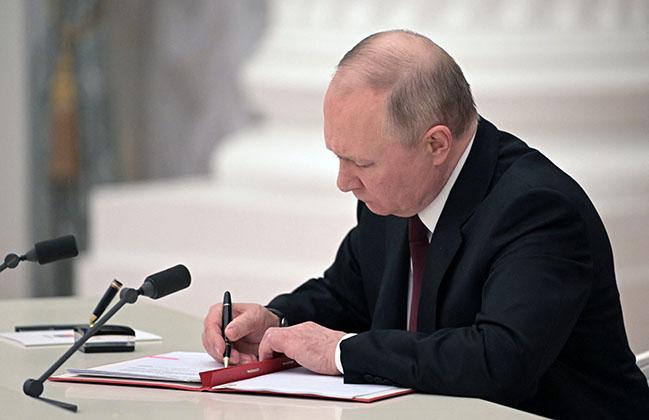
Russia has labelled Yale University an “undesirable organisation”, authorities said Tuesday, part of the Kremlin’s crackdown on critics that has accelerated during Moscow’s campaign in Ukraine.
Being declared “undesirable” effectively bans entities from operating in Russia and makes anyone who works with them liable to prosecution.
According to the prosecutor general, Yale’s activities were aimed at “violating territorial integrity of the Russian Federation, imposing an international blockade on the state and undermining its economic foundations.”
The prosecutors singled out Yale’s School of Global Affairs, accusing it of preparing opposition activists to organise protests in the country.
READ ALSO: Russian Strikes Kill 16 In Kyiv
President Vladimir Putin’s top contender, late opposition activist Alexei Navalny who died in prison in unclear circumstances in February 2024, was among the school’s fellows.
The US university joins international organisations and nonprofits such as Amnesty International, British Council, Greenpeace, Elton John’s AIDS Foundation which Moscow has labelled as undesirable.
Russia has also put on the list independent media outlets such as Radio Free Europe/Radio Liberty and Meduza.
AFP
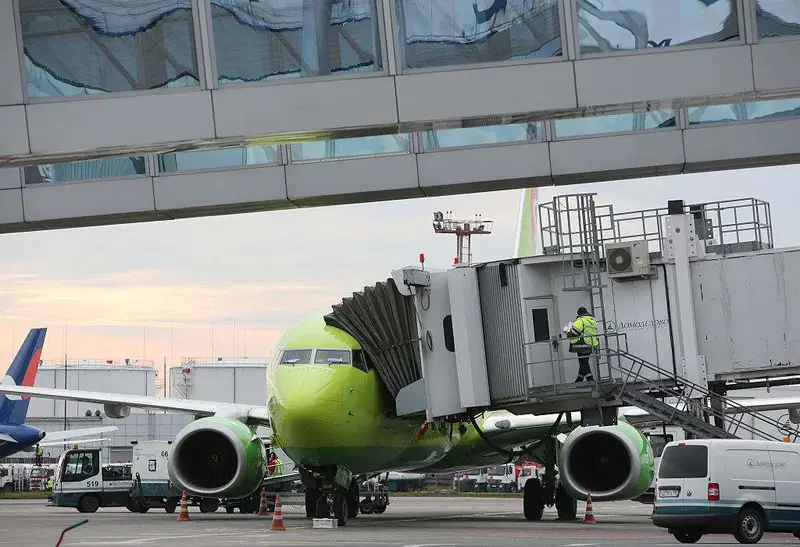
A man died after being sucked into the engine of a plane preparing to take off at Bergamo Airport in northern Italy Tuesday, an airport spokesperson told AFP.
The victim, who was “neither a passenger nor an airport employee”, forced his way onto the runway, where he was “pursued” in vain by airport security, according to the spokesperson for airport management company SACBO.
According to Italy’s Corriere della Sera daily, the man — in his thirties — burst into the airport, then used an emergency exit to rush onto the runway toward an aircraft preparing for take-off.
Earlier in the day, Spanish airline Volotea wrote on social media that its flight from Bergamo to Asturias in Spain was involved in an “incident” at 10:35 am (0835 GMT).
READ ALSO: Former UK PM Rishi Sunak Joins Goldman Sachs As Advisor
“One person not onboard and not affiliated with the company was seriously injured. All 154 passengers and six crew are safe,” it said on X.
“We are doing everything possible to support the affected passengers and crew, providing them with psychological support, while working in close coordination with the Italian authorities.”
The plane was an Airbus A319, according to tracking website Flightradar24.
Flights were suspended at Bergamo Airport, Italy’s third largest by passenger volume, following the incident, but resumed at midday, according to SACBO.
- NAFDAC Warns On Recalled U.S. Supplements
- Protest Rocks Abuja Over Osun LG Polls
- ADC Unveiled In Benue, Woo Gov Alia
- FG Launches Phase 7 Of Kainji Mass Trials Of Terrorist Suspects
- Lagos LG Poll: Police Restrict Movement Saturday
- EFCC Probes Man Nabbed With Undeclared $420,900 At Kano Airport
- Driver Stabs Former Boss To Death In Lagos
- Police Arrest Cultist For Murder, Abduction In Anambra Community
- Police Unveil Operation To Tackle ‘One-chance’ Robberies In FCT
- Pregnant UNIPORT Student Nabbed For Torching Lover To Death
About Us
Trending

 Entertainment3 days ago
Entertainment3 days ago2Baba’s New Romance In Trouble As Natasha Fumes Over Loyalty Remark

 Politics5 days ago
Politics5 days agoCoalition: Why Tinubu Must Not Sleep —Primate Ayodele

 News2 days ago
News2 days agoBREAKING: FG Officially Releases Age Limit For Admission Into Tertiary Institutions

 Metro3 days ago
Metro3 days agoTragedy As Navy Boat Capsizes After Free Medical Outreach In Delta

 News2 days ago
News2 days agoFlash Flood Warning: Sokoto, Edo, Akwa Ibom, 17 Other States At Risk In July — NiMet

 News2 days ago
News2 days agoOPINION: APC’s Leprosy Versus ADC’s Scabies

 Politics3 days ago
Politics3 days ago2027: Peter Obi Speaks On Running For President, Deal With Atiku

 Politics4 days ago
Politics4 days agoJUST IN] 2027: South-South APC Endorses Tinubu, Four Govs For Re-election

 News3 days ago
News3 days agoNigeria Becoming Land Flowing With Tears And Blood — Anglican Bishop Of Warri Laments

 Metro5 days ago
Metro5 days agoCultism: Edo Police Arrest Suspected Killer Of Three Vigilantes, 15 Others


